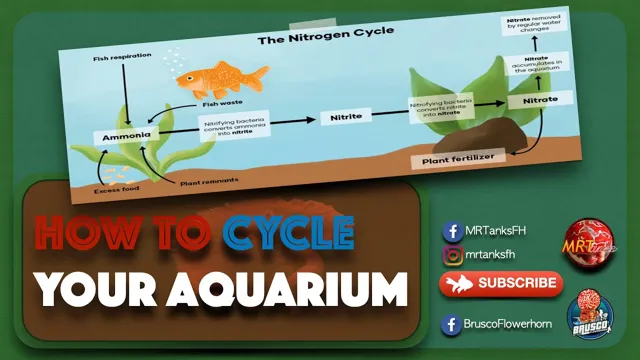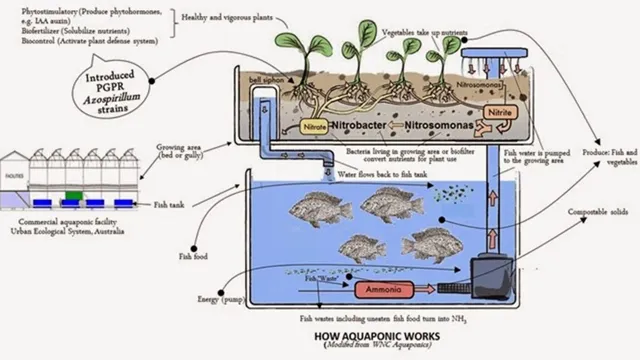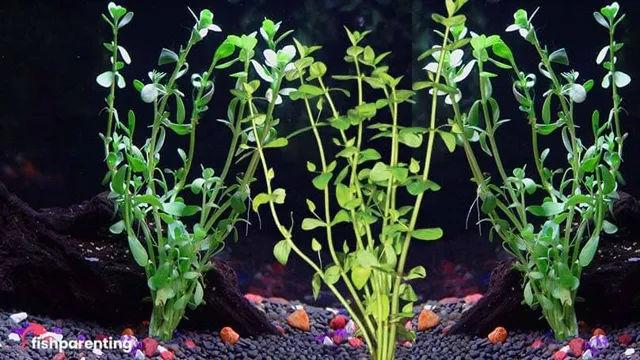How to Cycle Your New Aquarium: A Step-by-Step Guide for Beginners

Getting a new aquarium is exhilarating! You cannot wait to bring in your fish friends and start watching them swim. However, before you introduce your fish to their new home, it is vital to cycle your aquarium. Cycling your aquarium removes harmful chemicals and bacteria that could threaten your fish’s lives.
In this blog, you will learn how to cycle your new aquarium and ensure your fish live in a healthy environment. So, grab a cup of coffee and let’s dive deep into the world of aquariums!
What is Cycling a New Aquarium?
If you’re new to fishkeeping, one of the first things you’ll need to learn is how to cycle your new aquarium. Cycling a new aquarium is the process of establishing the beneficial bacteria that break down toxins in the water. Without these bacteria, your fish may be exposed to harmful levels of ammonia and nitrite.
The cycling process can take anywhere from a few weeks to a few months, but it’s essential for the health of your fish. To cycle your new aquarium, you’ll need to add a source of ammonia (such as fish food or pure ammonia) to the water and monitor the levels of ammonia, nitrite, and nitrate. As the bacteria grow, you’ll see a spike in ammonia levels followed by a spike in nitrite levels.
Eventually, the nitrite levels will drop, and the nitrates will rise, indicating that the cycling process is complete. Regular water testing and water changes will help keep your tank healthy and balanced for your fish to thrive.
Key Benefit: Establishing Beneficial Bacteria
Cycling a new aquarium is an essential process that every aquarium owner must undertake before introducing any fish. This process involves creating a natural and healthy environment that includes beneficial bacteria necessary for the aquarium ecosystem. Essentially, the goal of cycling is to establish a bacterial colony that converts fish waste into less harmful substances such as nitrite and nitrate.
Without cycling, these harmful substances could harm and even kill the fish, leading to devastating consequences. When cycling, aquarium owners add ammonia into the water to promote the growth of bacteria and create a favourable habitat for the fish. This process typically takes a few weeks, and understanding the chemistry behind it is key to establishing a thriving aquarium.
By cycling the aquarium, beneficial bacteria will grow to create a stable, balanced ecosystem and promote healthy aquatic life.

Step-by-Step Guide to Cycling Your Aquarium
Cycling your new aquarium is crucial for establishing a healthy and thriving aquatic environment. The process involves creating a balanced ecosystem with beneficial bacteria that can break down waste and toxins. First, you’ll need to fill your tank with dechlorinated water and add aquarium conditioner to remove any harmful chemicals.
Then, introduce live plants and bacteria supplements to kickstart the cycling process. It’s essential to monitor water parameters, including ammonia, nitrite, and nitrate levels, using a test kit. Once the beneficial bacteria population has increased and stabilized, the water parameters should return to safe levels, indicating that the aquarium has cycled successfully.
The cycling process can take anywhere from two to six weeks, so be patient and avoid adding fish until the process is complete to prevent stress or harm. By following these steps, you can create a healthy and thriving aquatic environment for your fish to thrive in.
Step 1: Prepare Your Aquarium
Cycling your aquarium is a crucial step that must be taken before introducing any fish into the tank. It involves establishing colonies of beneficial bacteria that will convert toxic ammonia and nitrite into less harmful nitrate. The first step in this process is to prepare your aquarium.
This involves ensuring that the water is dechlorinated and the temperature is right for the type of fish you will be keeping. You should also add a substrate, decorations, and plants if desired. A filter should also be set up to keep the water clean and aerated.
Once the aquarium is set up, you can add a source of ammonia to start the cycling process. This can be done using fish food, pure ammonia, or even a piece of raw shrimp. With time, the beneficial bacteria will establish themselves and the levels of ammonia and nitrite will begin to drop.
Eventually, you will be left with a tank that is capable of supporting fish without harming them. Remember to monitor the water parameters regularly and adjust as necessary to ensure the health of your aquarium and its inhabitants.
Step 2: Add Ammonia Source
The second step in cycling your aquarium is to add an ammonia source. This is important because it creates the necessary nutrient cycle for your fish to thrive. There are a few different options for ammonia sources, including fish food, pure ammonia, and even urine (yes, you read that right!).
In general, it’s best to start with a small amount of ammonia source and gradually add more over the course of several days. This allows the beneficial bacteria to grow and establish themselves in the tank. Once you’ve added the ammonia source, you’ll want to test the water regularly to monitor the levels and ensure that they’re within a safe range for your fish.
Remember, the goal here is to create a healthy, balanced environment for your aquatic pets, so patience and attention to detail are key.
Step 3: Test Water Parameters
Now that you have added ammonia to your aquarium and given it some time to begin cycling, it’s important to test the water parameters regularly. This will help you track the progress of the cycle and ensure that the levels of ammonia and nitrite are decreasing, while nitrate levels are increasing. You can use a test kit to monitor the pH, ammonia, nitrite, and nitrate levels of your aquarium water.
Make sure to follow the instructions carefully and record the results each time. As the cycle progresses, you should see a decrease in ammonia and nitrite levels, while nitrate levels should begin to rise. Once all ammonia and nitrite are at 0ppm and nitrates are present, it’s time to do a water change and introduce your first inhabitants.
Keeping an eye on your water parameters after this point is crucial for maintaining a healthy aquarium.
Step 4: Monitor and Adjust
Once you’ve successfully established the nitrogen cycle in your aquarium, it’s time to move on to step four: monitoring and adjusting. This step is crucial in maintaining a healthy and thriving aquatic environment for your fish and other aquatic inhabitants. Regular water testing using dropper or test strips can help you monitor levels of ammonia, nitrites, nitrates, pH levels, and water hardness.
You should also keep track of water temperature and any noticeable changes in behavior or appearance of your pets. Adjustments may be necessary if levels are not within the ideal range, which can vary depending on the type of fish and plants you have. For instance, adding more plants can help control nitrate levels while aeration or a water change can help lower ammonia or nitrite levels.
It’s important to make adjustments gradually to avoid stressing out your fish. To ensure a healthy and thriving aquatic environment, monitoring and adjusting is an ongoing process that requires your attention and care.
How Long Does Cycling Take?
So, you’ve just set up your new aquarium and you’re eager to add some gorgeous fish to it. But before you add any fish, you’ll need to cycle the tank first. Cycling is the process of building up beneficial bacteria in your tank that will eliminate harmful chemicals like ammonia, nitrites, and nitrates.
The cycling process can take anywhere from 2-6 weeks, depending on the size of your tank, the number of fish you plan to add, and how often you perform water changes. To start the cycling process, add a source of ammonia to your tank (you can use fish food or an ammonia solution) and test the water regularly for levels of ammonia, nitrites, and nitrates. Once you see a spike in ammonia levels, you’ll begin to notice the beneficial bacteria building up and nitrite levels increasing.
Eventually, you’ll see nitrate levels rise and ammonia and nitrite levels decrease to zero. Once this happens, your tank is cycled and you can safely add your fish. Remember, patience is key when cycling your tank.
Rushing the process can harm your fish and disrupt the delicate balance of your aquarium. So take your time, monitor your levels, and enjoy the process of creating a healthy and thriving aquatic ecosystem in your home.
Factors Affecting the Cycling Process
When it comes to cycling, the question on everyone’s mind is how long does it take to properly cycle a tank? Well, there is no one-size-fits-all answer to this question as several factors can influence the cycling process. The size of your tank, the type of filter you use, the amount of ammonia you add, and the temperature of the water can all affect how long it takes to establish a healthy nitrogen cycle. Typically, the process can take anywhere from 2-6 weeks, but in some cases, it may take even longer.
It’s crucial to be patient during the cycling process as rushing it can result in an unstable environment for your fish. So sit back, relax, and let nature do its thing while cycling your tank.
Common Mistakes When Cycling a New Aquarium
Cycling a new aquarium is a crucial step in ensuring the health and longevity of your aquatic pets. However, there are several common mistakes that many new aquarium owners make. One of the biggest mistakes is not being patient enough during the cycling process.
It can take several weeks for beneficial bacteria to establish in the tank and create a stable environment. Rushing the process can result in harmful spikes in ammonia and nitrite levels, which can be deadly for fish. Another mistake is overfeeding your fish during the cycling process.
The excess food can break down into harmful compounds and contribute to poor water quality. It’s also important not to overcrowd the tank with too many fish, as they can quickly produce excess waste and overwhelm the natural biological filtration process. By avoiding these mistakes and following proper cycling steps, your new aquarium can provide a healthy and happy home for your aquatic pets.
1. Adding Fish Too Soon
When starting a new aquarium, one common mistake people make is adding fish too soon. It’s important to understand that cycling a new aquarium is a process and takes time. Cycling refers to the growth and establishment of beneficial bacteria that help break down waste produced by fish, creating a healthy and balanced environment for them to live in.
If fish are added before the aquarium is properly cycled, there may not be enough beneficial bacteria to handle the waste produced, leading to ammonia and nitrite spikes that can harm or even kill fish. The best practice is to wait until the aquarium has completed the cycling process and water parameters are stable before adding any fish. There are products available that can speed up the cycling process, but it’s still important to monitor the water parameters regularly and wait for them to stabilize.
Remember, patience is key when it comes to establishing a healthy and thriving aquarium.
2. Overfeeding Fish
When cycling a new aquarium, it’s important to avoid some common mistakes that beginner hobbyists tend to make. Overfeeding your fish is one of the most common mistakes that can lead to poor water quality and ultimately harm your fish. Many people may not realize that uneaten food can quickly decompose and produce harmful ammonia, which can damage the gills and other organs of your fish.
To avoid overfeeding, you should feed your fish small amounts of food at a time, making sure only to feed them what they can consume in 2-3 minutes. It’s always better to underfeed your fish than to overfeed them. Along with water testing and maintaining proper filtration, keeping your fish on a balanced and appropriate feeding regime is critical to ensuring a healthy and thriving aquarium.
So, if you want to avoid any fish fatalities and maintain your aquarium’s beauty and health, always practice proper fish feeding techniques and avoid the temptation to overfeed!
3. Neglecting Water Changes
One common mistake people make when cycling a new aquarium is neglecting water changes. It’s important to understand that beneficial bacteria, which convert harmful ammonia into less toxic nitrites and then nitrates, are not the only entities living in the aquarium. Other organisms, such as phytoplankton and detritus, also thrive in the water.
As a result, these organisms slowly build up harmful waste products over time, which can put undue stress on fish and other aquatic creatures. To prevent this, regular water changes are absolutely necessary. Depending on the size of your aquarium and the number of fish, experts recommend changing anywhere from 10% to 30% of your aquarium water every week.
This will help remove excess waste products and replenish essential nutrients in the water. Remember, a healthy aquarium is a happy aquarium, and regular water changes are essential to maintain a thriving aquatic ecosystem.
Conclusion
Congratulations on your brand new aquarium! Now it’s time to get down to business and cycle it properly. Think of it like inviting guests over to your house – you wouldn’t want to throw a party without cleaning and prepping your home first, right? Similarly, you don’t want to introduce fish into an unprepared environment. Take your time, be patient, and let nature do its thing.
Soon enough, your aquarium will be ready for its first party of fish friends – and with a properly cycled tank, everyone will be able to enjoy the festivities in a clean and healthy environment.”
FAQs
Why is it important to cycle a new aquarium?
Cycling a new aquarium helps establish a healthy and stable environment for your fish. It allows beneficial bacteria to grow and eliminate harmful toxins in the water.
How long does it take to cycle a new aquarium?
The time it takes to cycle a new aquarium varies, but on average it takes 4 to 6 weeks.
Can I add fish to my new aquarium before it’s fully cycled?
It is not recommended to add fish to a new aquarium before it’s fully cycled as it can lead to water quality issues and harm the fish.
How can I speed up the cycling process in my new aquarium?
You can speed up the cycling process by adding beneficial bacteria supplements or using seeded filter media from an established aquarium.
Should I test the water during the cycling process?
Yes, it’s important to regularly test the water during the cycling process to monitor the levels of ammonia, nitrite, and nitrate.
What should I do if I encounter high levels of ammonia or nitrite during the cycling process?
If you encounter high levels of ammonia or nitrite during the cycling process, perform a partial water change to reduce the levels and continue monitoring.
Can I add live plants to my new aquarium during the cycling process?
Yes, you can add live plants to your new aquarium during the cycling process as they can help absorb excess nutrients and toxins in the water.






